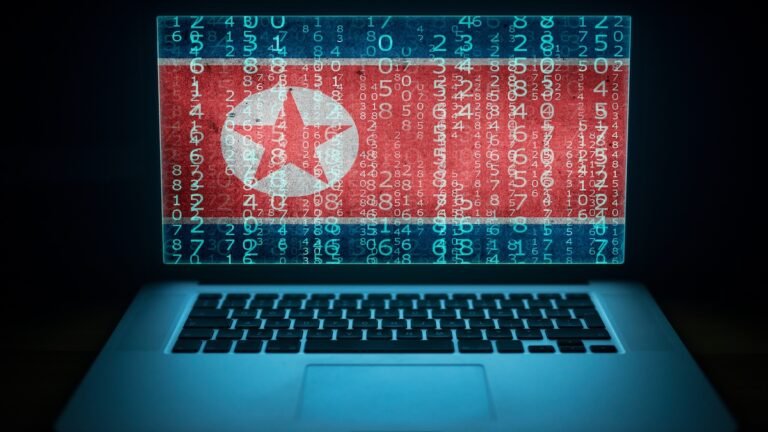Summary Points
-
Complex Infiltration Tactics: North Korean hackers, identified as APT BlueNoroff, are using deceptive Zoom update links via Telegram to spread Nim-compiled macOS malware, following an elaborate social engineering strategy targeting web3 and crypto employees.
-
Advanced Malware Techniques: The malware, known as NimDoor, incorporates unique elements such as signal-based persistence, encrypted configuration handling, and asynchronous execution, demonstrating sophisticated capabilities beyond typical macOS threats.
-
Dual Execution Chains: Analysis reveals that attackers utilize two Mach-O binaries—one in C++ and another in Nim—to facilitate distinct infection processes, which include data exfiltration through bash scripts and the establishment of persistent access via Nim binaries.
- Innovative Use of Nim: The attackers leverage Nim’s unique functionalities, such as compile-time execution and complex behavior integration, to obscure control flow in the malware, making detection and analysis more challenging for cybersecurity defenses.
Underlying Problem
Recent reports from cybersecurity firm SentinelOne reveal a sophisticated chain of cyberattacks orchestrated by North Korean hackers, specifically a group called APT BlueNoroff. These intrusions primarily target employees within web3 and cryptocurrency organizations by enticing them to install malicious macOS malware disguised as legitimate Zoom update software. The attackers employ deception through a familiar social engineering tactic: impersonating trusted contacts via Telegram and scheduling supposed meetings through Calendly. Consequently, victims receive emails prompting them to execute a fraudulent script that catalyzes a multi-stage infection, culminating in a malware dubbed NimDoor.
In a notable twist, the malware’s architecture employs the Nim programming language, an unusual choice in the landscape of macOS threats, enabling intricate data manipulation and persistence mechanisms. This attack chain utilizes a dual-binary approach, with one binary facilitating data exfiltration and the other establishing ongoing access and control over the infected systems. SentinelOne highlights the advanced tactics utilized by these hackers, including encrypted configuration management and process injection techniques, showcasing a significant evolution in malware sophistication. As cyber vulnerabilities within the cryptocurrency sector continue to proliferate, this incident underscores the urgency for enhanced cybersecurity protocols to combat increasingly complex threats.
What’s at Stake?
The recent cyberattacks orchestrated by North Korean hackers, specifically targeting employees in web3 and cryptocurrency sectors through deceptive Zoom software updates, pose significant risks not only to the immediate victims but also to the wider business and user ecosystem. As these malicious actors deploy sophisticated Nim-compiled malware that infiltrates systems by masquerading as legitimate software, they exploit vulnerabilities in communication protocols, such as Telegram and Calendly, undermining trust and operational integrity across organizations. This chain of infection can lead to severe data breaches, financial losses, and protracted downtime, engendering a climate of fear and uncertainty that may compel other businesses to reconsider their digital infrastructures and collaborative practices. The potential for data exfiltration—including sensitive information from key applications like browser history and credential stores—further heightens the risk of follow-on attacks, perpetuating a cycle of compromised security that could cascade through interconnected networks and ultimately destabilize stakeholder confidence across the broader web3 and crypto landscape. Such scenarios underscore the urgent necessity for heightened cybersecurity vigilance and inter-organizational communication to avert systemic fallout.
Possible Actions
In the ever-evolving landscape of cybersecurity threats, timely remediation is paramount to safeguarding sensitive information and systems, particularly in the face of sophisticated attacks like those executed by North Korean hackers using deceptive Zoom updates to propagate macOS malware.
Mitigation Steps
- User Education: Conduct regular training sessions to help users identify phishing attempts and malicious software downloads.
- Software Updates: Ensure all applications, including Zoom, are regularly updated to their latest versions directly from official sources.
- Endpoint Protection: Implement robust antivirus and endpoint detection systems to catch and neutralize malicious installations.
- Network Monitoring: Employ real-time network monitoring to detect suspicious activity indicative of malware deployment.
- Incident Response Plan: Develop and routinely test a comprehensive incident response plan to quickly address any breaches that may occur.
- Application Whitelisting: Restrict software installations to pre-approved applications to reduce attack vectors.
- Multi-Factor Authentication: Enforce multi-factor authentication for accessing sensitive systems to add an additional layer of security.
NIST CSF Guidance
According to the National Institute of Standards and Technology Cybersecurity Framework (NIST CSF), organizations should prioritize proactive measures that align with the Identify, Protect, Detect, Respond, and Recover categories. For more in-depth guidance, refer to NIST Special Publication (SP) 800-53, which outlines security and privacy controls for federal information systems and organizations. This resource is invaluable for mitigating risks associated with malicious software and ensuring compliance with recognized standards.
Explore More Security Insights
Discover cutting-edge developments in Emerging Tech and industry Insights.
Understand foundational security frameworks via NIST CSF on Wikipedia.
Disclaimer: The information provided may not always be accurate or up to date. Please do your own research, as the cybersecurity landscape evolves rapidly. Intended for secondary references purposes only.
Cyberattacks-V1

